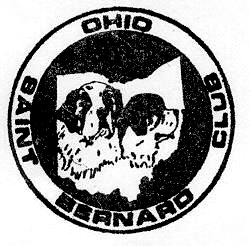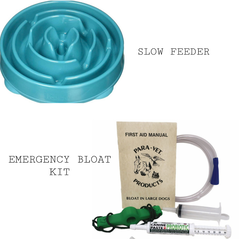|
Bringing a new dog into your life is an exciting and joyful experience. However, it's essential to choose a responsible and ethical breeder to ensure the health and well-being of your future furry friend. By following a few key guidelines, you can make an informed decision that supports responsible breeding practices and helps combat unethical practices.
Choosing an ethical dog breeder is crucial in ensuring your new four-legged companion is healthy, well-socialized, and comes from responsible breeding practices. By conducting thorough research, visiting the breeder, and assessing their methods, you can make an informed decision that promotes the well-being of dogs and discourages unethical breeding. Remember, responsible breeders play a vital role in preserving and improving the quality and health of specific dog breeds, and by supporting ethical practices, you contribute to the welfare of dogs and the future of responsible dog breeding.
0 Comments
As we approach the end of the summer season, I would like to talk about the emerging prevalence of a non-native mosquito species, the Asian tiger mosquito. This year was the first year I myself had started to see this type of mosquito in Northeast Ohio. My observation of this pest is that they are aggressive even during daylight and have distinct black and white striping on their legs and bodies. The daytime activity level of these pests poses an increased threat of heartworm disease. Which means we must protect our animals from this risk now more than ever, especially in the more humid zones of the United States. These parasitic worms can infiltrate your dog's heart and lungs, causing serious health issues and, in severe cases, death. Preventive medications prescribed by a veterinarian are the most effective way to prevent heartworm disease. There are several different types available, such as ingestible tablets, topical treatments, and injections. Most of these preventative medications are given to dogs on a monthly basis, with the exception of the injectable, which can be administered once every 6 or 12 months. Your veterinarian can help you choose which preventative is right for your dog. It's also important to note that before starting any preventative, a blood test will be necessary to check for an active heartworm infection. Heartworm preventatives can cause harm to an already infected pet. Lastly, it's important to have your dog tested for heartworm on a yearly basis, even if they are on preventive, as well as limit outdoor activities for your dog during peak mosquito weather conditions, such as days that have a high humidity and heat index. Bloat, scientifically known as gastric dilation volvulus (GDV), is a serious and potentially life-threatening condition that commonly affects larger breed dogs. This condition occurs when the stomach fills with gas, food, or fluid, and subsequently twists upon itself, leading to a dangerous obstruction. As a responsible pet owner, it's essential to be aware of the symptoms and preventive measures to safeguard your beloved canine companion.
Symptoms of bloat in larger breed dogs include restlessness, unproductive attempts to vomit, abdominal swelling, excessive drooling, and a rapid heart rate. In severe cases, dogs may exhibit signs of shock, indicating a medical emergency that requires immediate veterinary attention. Preventing bloat involves several strategies. Firstly, consider dividing your dog's daily meals into smaller portions to minimize the risk of overeating in one sitting. Additionally, avoid intense exercise before and after meals, as it may contribute to the onset of bloat. Elevated feeders have also been suggested to reduce the chances of GDV, but further research is needed to solidify this claim. Slow feeders are a great option to help your large dog eat slower, slower eating reduces the risk of bloat. Bloat can progress rapidly, every second counts and can mean the difference between life and death for a dog. More and more large breed dog owners are purchasing emergency bloat kits. These kits can give your dog relief during the first signs of bloat. It's important to note that it is vital for the dog to be examined by a veterinarian as soon as possible; the kit does not cure bloat but provides you time to get your dog in for an emergency exam. By staying informed about the symptoms and taking preventative measures, pet owners can significantly reduce the likelihood of bloat and provide their larger breed dogs with a healthier and happier life. Always consult your veterinarian for personalized advice and ensure the well-being of your furry friend. As The Ohio Saint Bernard Club approaches our annual participation in the Steel Valley Cluster Dog Show, we'd like to share some information about training to participate in one of these events. Throughout the year, there are many opportunities to show your dog nationwide. It's always possible to start training to participate in one of these events!
There are several different options to get started training: Local Dog Training Clubs: Look for dog training clubs or obedience schools in your area that offer classes that focus on preparing dogs for show competitions. These clubs often have experienced instructors who can guide you through training. Professional Dog Handlers: Consider hiring a professional dog handler specializing in training dogs for show competitions. They have extensive experience in the show ring and can provide personalized coaching and guidance. Breed-specific Clubs and Associations: Many dog breeds have dedicated clubs and associations that offer training programs and resources tailored to their specific breed standards and requirements. These organizations often hold workshops, seminars, and clinics where you can learn from breed experts and experienced handlers. Online Resources and Courses: There are numerous online resources, blogs, and courses available that provide training tips, techniques, and guidance for dog show competitions. These can be particularly useful for individuals needing more local training options or prefer self-paced learning. Mentorship and Networking: Reach out to experienced exhibitors and handlers in the dog show community and inquire about mentorship opportunities. Building relationships with knowledgeable individuals can offer valuable insights, training advice, and support along your journey. Attending dog shows, observing ring procedures, and studying successful handlers can also provide practical learning experiences. The key is to seek out knowledgeable individuals, resources, and communities that can help you develop the necessary skills and knowledge to excel in dog show competitions. web sources - AKC, SBCA, Infodog Are you considering adding a Saint Bernard to your family, or have just added one? These gentle giants are known for their loyalty, affection, and protectiveness. Joining a breed club can be a great way to gain knowledge about the breed and connect with other Saint Bernard owners.
Here are some reasons why joining a breed club can be beneficial: 1. Learn about the traits of the breed Breed clubs are a great resource for learning about the unique traits and characteristics of the Saint Bernard breed. From their history to their temperament, breed clubs can provide a wealth of information to help you better understand and care for your new pet. You can also learn about common health issues, and how reputable breeders work hard to reduce likelihood of illness or handicaps. 2. Understand the breed standard qualities The breed standard is a set of guidelines that outlines the ideal physical and temperamental characteristics of the Saint Bernard breed. By joining a breed club, you can learn about the breed standard and what qualities to look for in a Saint Bernard. This can be especially important if you are considering breeding in the future. By being a member of a breed club you can receive guidance and invaluable knowledge to help guide you in such decisions. By getting involved in conformation showing, you can learn how your own Saint Bernard measures up to the breed standard and determine whether they would be a good candidate for breeding. It's important to note, however, that not all Saint Bernards are suitable for breeding, and breeding should only be done with careful consideration and planning which also includes proper health testing. What is Conformation showing? A conformation dog show is a competition where purebred dogs are evaluated by judges based on how closely they conform to their breed standard. During the show, dogs are judged on various factors, such as their body structure, gait, and temperament. The judges compare each dog to its breed standard and select a winner based on how closely it meets the standard. Conformation shows are a great way to showcase the beauty and grace of purebred dogs while also helping breeders improve the overall quality of their breeding stock. Additionally, they provide a great opportunity for dog owners and enthusiasts to come together and celebrate their shared love for dogs. In conclusion Breed clubs play a crucial role in preserving and bettering dog breeds. By promoting responsible breeding practices, educating owners and breeders, and organizing events like conformation shows, clubs can help improve the overall quality of the breed. They also serve as a repository for breed-specific knowledge and history, which helps ensure that the breed's unique traits and characteristics are preserved for future generations. |
AuthorLindsey Powell Archives
September 2023
Categories |


 RSS Feed
RSS Feed